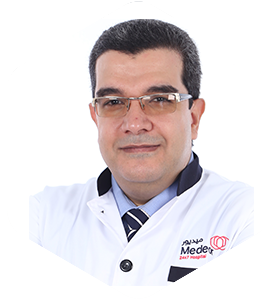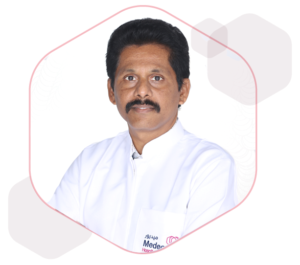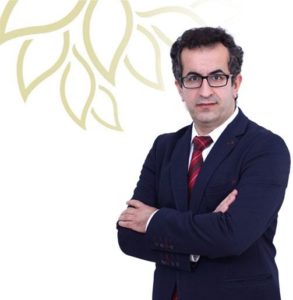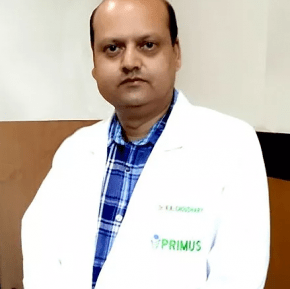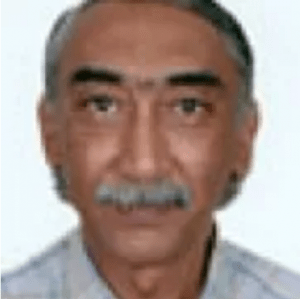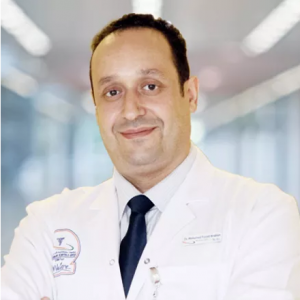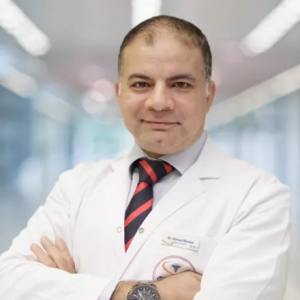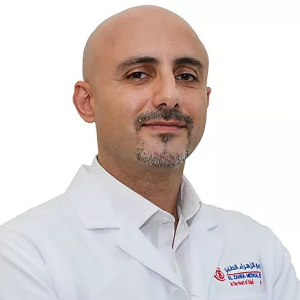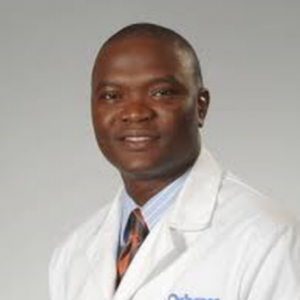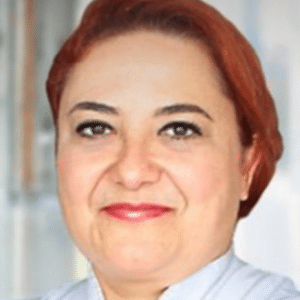Deep brain stimulation involves implanting electrodes within certain areas of your brain. These electrodes produce electrical impulses that regulate abnormal impulses. Or the electrical impulses can affect certain cells and chemicals within the brain. The amount of stimulation in deep brain stimulation is controlled by a
pacemaker-like device placed under the skin in your upper chest. A wire that travels under your skin connects this device to the electrodes in your brain.
Deep brain stimulation is approved to treat a number of conditions, such as:
• Dystonia
• Epilepsy
• Essential tremor
• Obsessive-compulsive disorder
• Parkinson’s disease
Deep brain stimulation is a surgical technique that has to do with the implantation of electrodes in certain areas of the brain. These electrodes are designed to produce electrical impulses that either block or change abnormal activities that cause symptoms.
A pacemaker-like device is placed under the skin of the upper chest to control the amount of stimulation produced by deep brain stimulation. A wire is used to connect this device to the electrodes implanted in the brain.
The deep brain stimulation system is made up of four parts:
- The Leads; are thin insulated wires that connect the electrodes that are implanted in the brain to the pacemaker-like device.
- A small pacemaker-like device, known as a pulse generator. This generates the electrical pulses.
- Extension leads; these transport the electrical pulses from the device to the leads implanted in the brain.
- Hand-held programmer device; used to adjust the device’s signals. It is also used to turn the device on and off.
Why deep brain stimulation may be carried out.
Deep brain stimulation is a specialised treatment for people with
- Movement disorders; for example, essential tremor, Parkinson’s disease and dystonia.
- Psychiatric conditions; like obsessive-compulsive disorder.
- Difficult-to-treat epilepsy; used to reduce seizures.
Deep brain stimulation is, however, reserved for those who are unable to get their symptoms under control with medications.
Preparation for a deep brain stimulation surgery.
Before going for a deep brain stimulation surgery, it I imperative to carry out some medical tests to be sure that deep brain stimulation is a safe and appropriate option for you. Also, imaging studies of the brain, for instance, an MRI, is important before the surgery. This helps to map out the areas of the brain to implant the electrodes.
Deep brain stimulation surgery procedure.
Deep brain stimulation surgery is of two phases – brain surgery and chest wall surgery.
Brain Surgery: For the brain surgery portion of deep brain stimulation surgery, the first step is to fit the head into a special head frame (stereotactic head frame) to protect the head and keep it still during the procedure. Magnetic resonance imaging is then used to map the brain and identify the brain area where the electrodes will be placed.
This procedure is either carried out under general anaesthesia which renders patients unconscious or with the patient being fully awake and alert. If it is carried out while the patient is awake, local anaesthesia is administered to numb the scalp before beginning the procedure.
Afterwards, the thin wire lead with a number of contacts (electrodes) is implanted at the tips into a specific area of the brain. Alternatively, one lead is implanted into each side of the brain, which makes a total of two leads. A wire is then run underneath the skin to a Neuro-stimulator (which is the pulse generator) that has been implanted near the collarbone.
During the entire process, the brain is carefully monitored by both the neurologist and the surgeon to ensure correct electrode placement.
Chest wall surgery: For this phase of the deep brain stimulation surgery, the pulse generator (which is the part of the device that contains the batteries) is implanted underneath the skin of the chest, near the collarbone.
The wires from the brain electrodes that have been placed under the skin, during the brain surgery, are then guided down to the battery-operated pulse generator.
The pulse generator is then programmed to send continuous electrical pulses to the brain. The generator is controlled by the patient, and can turn it on and off with a special remote control.
General anaesthesia is used during this process.
The outcome of a deep brain stimulation surgery.
A deep brain stimulation procedure only lessens the symptoms, it won’t cure the disease. So, if the deep brain stimulation surgery turns out fine, symptoms significantly improve, but usually don’t go away completely. Also, in some cases, medications may still be necessary for certain conditions.
It should also be known that deep brain stimulation isn’t always successful for everyone, and a number of variables are involved in the success of deep brain stimulation. Therefore, it’s very important to have a thorough discussion with your doctor before embarking on the surgery and enquire about what type of improvement you should expect for your condition.
Deep brain stimulation risk.
There are a couple of deep brain stimulation risk associated with deep brain stimulation surgery;
- Lead misplacement.
- Bleeding in the brain.
- Stroke.
- Infection
- Breathing problems.
- Nausea.
- Heart problems.
- Seizure.
FAQ
What are deep brain stimulation side effects?
There are a couple of deep brain stimulation side effects. They include;
- Numbness or tingling sensations.
- Tightness of muscle in the face or arm.
- Speech problems.
- Balance problems.
- Light-headedness.
- Vision problems; for instance, double vision.
- Unwanted mood changes; for instance, anger and depression.
What are the deep brain stimulation surgery side effects?
There are a few deep brain stimulation surgery side effects. That is, associated with the performance of the surgical technique. They include;
- Seizure.
- Infection.
- Headache.
- Confusion.
- Difficulty with concentrating.
- Stroke.
- Hardware complications; like an eroded lead wire.
- Temporary pain and swelling at the site of implantation.
What conditions are deep brain stimulation used to treat?
Deep brain stimulation has been approved for treatment for a number of conditions, namely;
- Dystonia.
- Epilepsy.
- Essential tremor.
- Obsessive compulsive disorder.
- Parkinson's disease.
Deep brain stimulation is also under study as a potential treatment for;
- Addiction.
- Chronic pain.
- Cluster headache.
- Dementia.
- Major depression.
- Huntington's disease.
- Multiple sclerosis.
- Stroke recovery.
- Tourette syndrome.
- Traumatic brain injury.
Is deep brain stimulation a safe procedure?
Deep brain stimulation is a minimally invasive procedure and considered safe. However, just like surgeries, there are a couple of complications that can arise from it. Also, the brain stimulation itself has a number of side effects.
What should I consider before going for a deep brain stimulation?
A deep brain stimulation surgery is a serious and potentially risky surgical technique. Therefore, anyone going for the surgery is highly advised to have thorough discussions with his/her doctors to carefully examine and weigh the associated risks and the potential benefits of the procedure.

